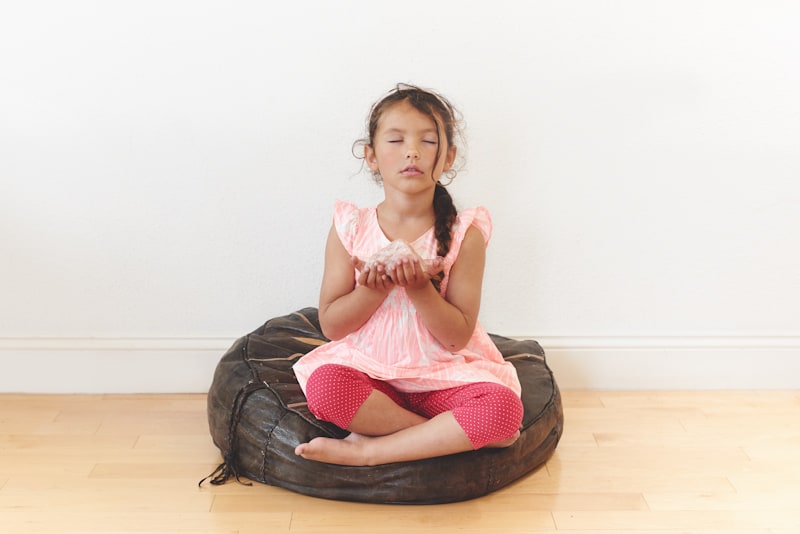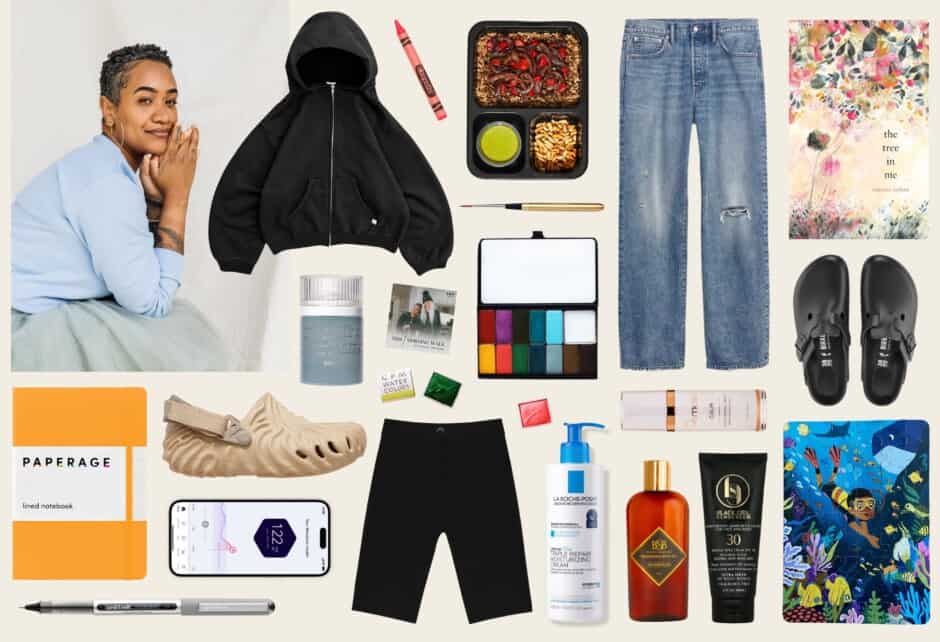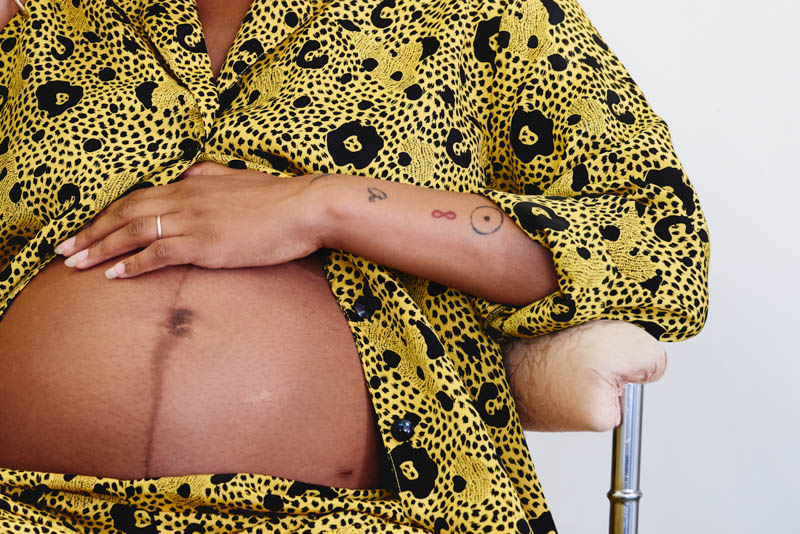
Teaching Kids Mindfulness, The Basics
Written by Katie Hintz-Zambrano
Photography by Maria Del Rio
Being a more mindful individual and parent might be one of your personal resolutions for the new year, and research shows the same goal applied to your child can be of great benefit. So, what is “mindfulness” and how can you get started with your littles? We asked Andy Puddicombe, co-founder of beloved meditation app Headspace (12 million downloads and counting), to break it all down.
Mindfulness, defined. “Mindfulness means to be present, experiencing life moment to moment as it unfolds. It is a quality of mind that is inherently kind and curious, free from any judgment. This is a skill that any of us can learn, it simply requires practice. The result is a greater feeling of calm, clarity, and compassion in our lives. It works for children in much the same way that it helps us adults to better manage our stress. If we’re mindful, we tend to be a little calmer and clearer, less reactive, more present, and we tend not to carry around the weight of things that have happened. It also helps children develop and cultivate healthier and happier relationships.”
Mindfulness at every age. “Children develop at different rates, but generally speaking, 3 or 4 is a good age to begin. Focus less on any kind of result and more on the child getting comfortable with the exercise and getting a feel for mindfulness as part of their daily routine. When introducing mindfulness to children, it’s important that the exercises feel both manageable and playful. At Headspace, we’ve split the kids’ section of the app into three distinct age groups to ensure that it feels this way—5 and under; 6-8; and 9-12. For the Pre-K set, the Headspace exercises are primarily built around calm, focus, and kindness, but the most popular one is the meditation helping them to go to sleep at night. For elementary-aged kids, there’s a similar set of themes but the techniques are a little more advanced, and there are more options for duration, too. There are themes around balance, happiness, and waking up in the morning for this age group. For middle/high school students, we recommend using the 9-12 section of the app, which incorporates and builds on all of these themes, or even starting with Take10, in the main part of the app.”
Targeting your child’s transitional times. “Look for periods of time at home where your child is moving from one activity to the next. It might be upon waking in the morning, perhaps on the way to school, before bath time in the evening, or perhaps when moving from playtime to homework. If you are looking for one period of time in the day to focus your efforts, I would say first thing in the morning or last thing at night. Prior to launching Headspace for Kids, we carried out multiple pilot studies in public schools. Our request was that teachers hold a meditation session for their pupils for three minutes, once a day. What ended up happening was that schools were using it for three minutes, but as often as five times a day, with the teachers joining in. The feedback was that these simple exercises were incredibly effective, especially when children were in transition.”
Slipping it into the bedtime routine. “At present, no scientific evidence exists to suggest there is a specific time of day that’s better or worse for children to meditate. But based on what we see with Headspace for Kids, our stats show that it’s in the evening at bedtime that’s by far and away the most popular time to use the app. For lots of parents, the meditation is used instead of, or as a supplement to, the bedtime story. That said, I think it’s important to emphasize that every single child is unique, so remain flexible and find a time that works best for you and your child.”
Modeling mindfulness. “As with anything in life, it’s better to lead with our actions than our words. Children will naturally pick up on how we behave as parents. If we are always caught up in our own stuff, always distracted, and quick to react—or over-react—then our children will mirror this behavior. On the flip side, if we are more present, more focused, and intentional in our way of living, then our children are likely to mirror that behavior instead. The beauty of it is that both parent and child get to benefit from this approach.”
Find out more about Headspace for Kids here.
Share this story



